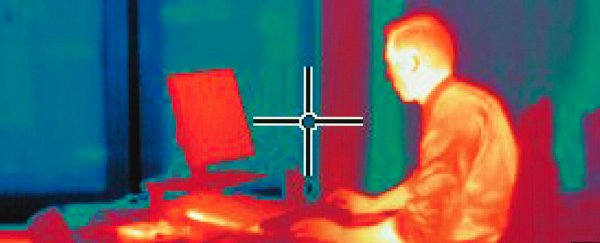With millions of Americans vaccinated against COVID-19, many who have worked from home over the past year will be heading back into the office. Adjusting to new routines is challenging and can affect our health and fitness. We've been more sedentary or more active, gained weight or dropped pounds.
As part of my work as a biomedical engineer, I study how physical factors influence human metabolism. This includes height and weight, gravity – and air temperature.
My research colleagues and I have found that living or working in a cool environment for extended periods can lower core body temperature. That decreases metabolic rate – how fast we burn calories – and commonly causes weight gain.
Maintaining core body temperature
Humans are homeotherms – that is, we maintain a relatively constant core body temperature. Specifically, we keep our body temperature in the range of 97 °F to 101 °F (36 to 38 °C) even in cool environments. Three different types of metabolic activity keep our body warm.
The first is basal metabolism. About two-thirds of the calories we burn each day fuel basic bodily functions, all of which generate heat: breathing, blood circulation, cell growth, brain function and food digestion. Any kind of physical movement also generates heat through chemical reactions that make muscles contract.
A third heat-generating process happens within specialized tissue called "brown fat." It's a leftover evolutionary adaptation that kept us from freezing during the ice ages. It kicks in when our core temperature drops to very low levels, but most people lose their brown fat as they age.
With increasing body temperature, our metabolic rate rises and we burn more calories. This generates more heat and further raises our body temperature, creating a positive feedback process which usually keeps our body temperature in the healthy range.
But this process is remarkably sensitive to temperature. For every 1-degree drop in body temperature, our metabolic rate can decrease by more than 7 percent. This means that the resting metabolic rate for someone at a body temperature of 101 °F (38.3 °C, the high end of normal) is up to 30 percent higher than if their temperature were 97 °F (36.1 °C, the low end).
Increasing body temperature by four degrees can burn more calories during the course of the day than the average person burns as a result of all of their daily physical activity.
 (Schwetana Sunkari/Author provided)
(Schwetana Sunkari/Author provided)
Above: Working in a chilly office lowers core body temperature, pushing body temperature below the normal range, as shown in this chart plotting women's body temperature and age for a typically cooled office at 70 °F.
Body temperature versus physical exercise
This is why changing your physical environment can substantially alter the way your body works – and impacts both health and fitness. If you're gaining weight and aren't sure why, check the thermostat where you live or work.
Most offices tend to be kept near 70 °F (21.1 °C). That's why so many of your co-workers are complaining of being cold, wearing sweaters or jackets, or using a space heater. This tends to be too cold for most women – and many men – who sit at a desk all day. But it's more than uncomfortable; it's not healthy.
The "correct" room temperature is where you are comfortable: not too hot, not too cold. That's generally between 72 and 81 °F (22.2 and 27.2 °C) at moderate humidity, but may range as low as 65 or up to 85 °F (18.3 °C to 29.4 °C).
Working in a cold office slows your metabolism. In addition to making weight management challenging, sluggish metabolic rates are linked to lowered immune response, heart damage and increased risk of developing Type 2 diabetes.
If you don't have control over the thermostat, you still have a few options besides wearing a coat all day.
New technologies include a wearable personal device which changes your perception of warmth and cold; a passive exercise device that increases your metabolic rate by increasing cardiac output (I have an equity stake in this company); and a "smart" version of the traditional space heater. However you achieve it, do your best to stay comfortably warm in your future workplace.![]()
Kenneth McLeod, Professor of Systems Science and Director, Clinical Science and Engineering Research Laboratory, Binghamton University, State University of New York.
This article is republished from The Conversation under a Creative Commons license. Read the original article.
Editor's note (1 May 2020): This article was updated to indicate the author has an equity stake in Sonostics, one of the companies linked to in the article.
